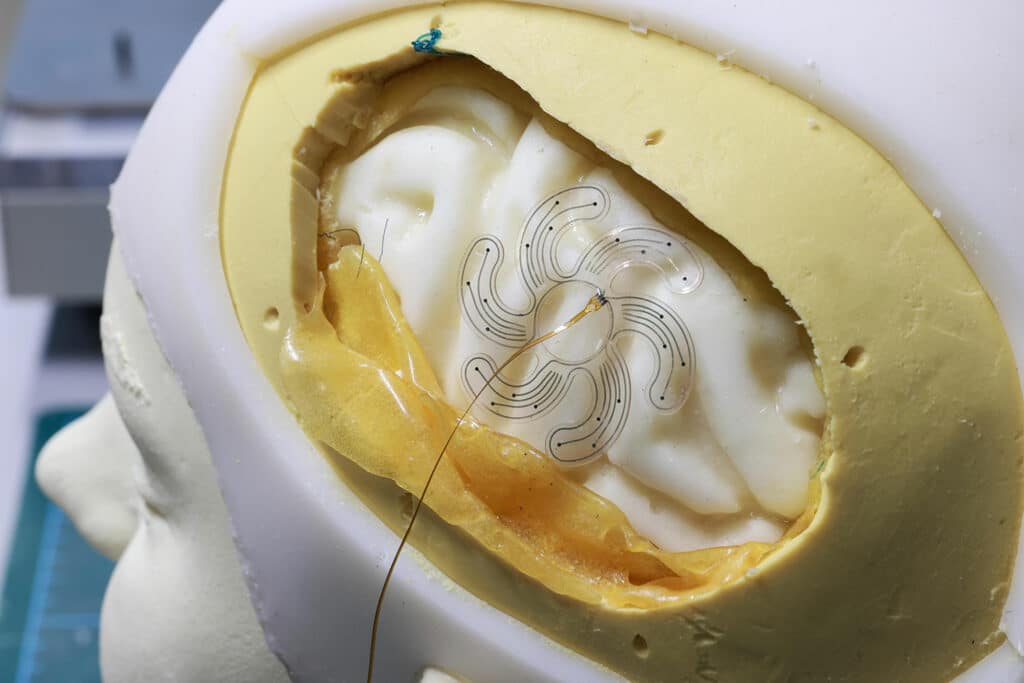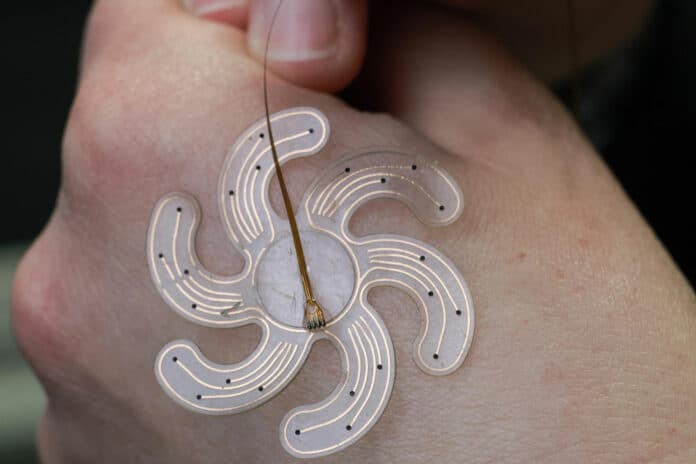Scientists at the Swiss Federal Institute of Technology Lausanne (EPFL) have developed electrode arrays that can be deployed inside the human skull without damaging the brain. The technology will help doctors to perform minimally invasive surgeries on patients living with epilepsy and various other brain disorders.
The electrode array is made of gold and a transparent elastomer material. It can be funneled through a small hole in the skull and deployed over a relatively large surface over the brain’s cortex.
“Minimally invasive neurotechnologies are essential approaches to offer efficient, patient-tailored therapies,” says Stéphanie Lacour, professor at EPFL Neuro X Institute. “We needed to design a miniaturized electrode array capable of folding, passing through a small hole in the skull, and then deploying in a flat surface resting over the cortex. We then combined concepts from soft bioelectronics and soft robotics.”
The first prototype of the device consists of an electrode array that fits through a hole 2 cm in diameter. But when deployed, it extends across a surface that’s 4 cm in diameter. It has six spiraled-shaped arms to maximize the surface area of the electrode array and, thus, the number of electrodes in contact with the cortex. Straight arms result in uneven electrode distribution and less surface area in contact with the brain.

The electrode array, complete with its spiraled arms, is neatly folded up inside a cylindrical tube called the loader, ready for deployment through the small hole in the skull. Thanks to an everting actuation mechanism inspired by soft robotics, each spiraled arm is gently deployed one at a time over sensitive brain tissue.
“The beauty of the eversion mechanism is that we can deploy an arbitrary size of the electrode with a constant and minimal compression on the brain,” says Suhko Song, lead author of the study. “The soft robotics community has been very much interested in this eversion mechanism because it has been bio-inspired. This eversion mechanism can emulate the growth of tree roots, and there are no limitations in terms of how much tree roots can grow.”
Researchers also explored the idea of rolling up the arm of the electrode as a strategy for deployment. But the longer the arm, the thicker it becomes when rolled up. If the rolled-up electrode becomes too thick, then it would inevitably take up too much room between the skull and the brain, placing dangerous amounts of pressure on the brain tissue.
So far, the team has successfully tested the deployable electrode array in a mini-pig. The EPFL team believes that their innovation could open promising avenues for minimally invasive cortical surgery and applications related to neurological disorders such as motor and sensory deficits.
Journal reference:
- Sukho Song, Florian Fallegger, Alix Trouillet, Kyungjin Kim, Stéphanie P. Lacour. Deployment of an electrocorticography system with a soft robotic actuator. Science Robotics, 2023. DOI: 10.1126/scirobotics.add1002
